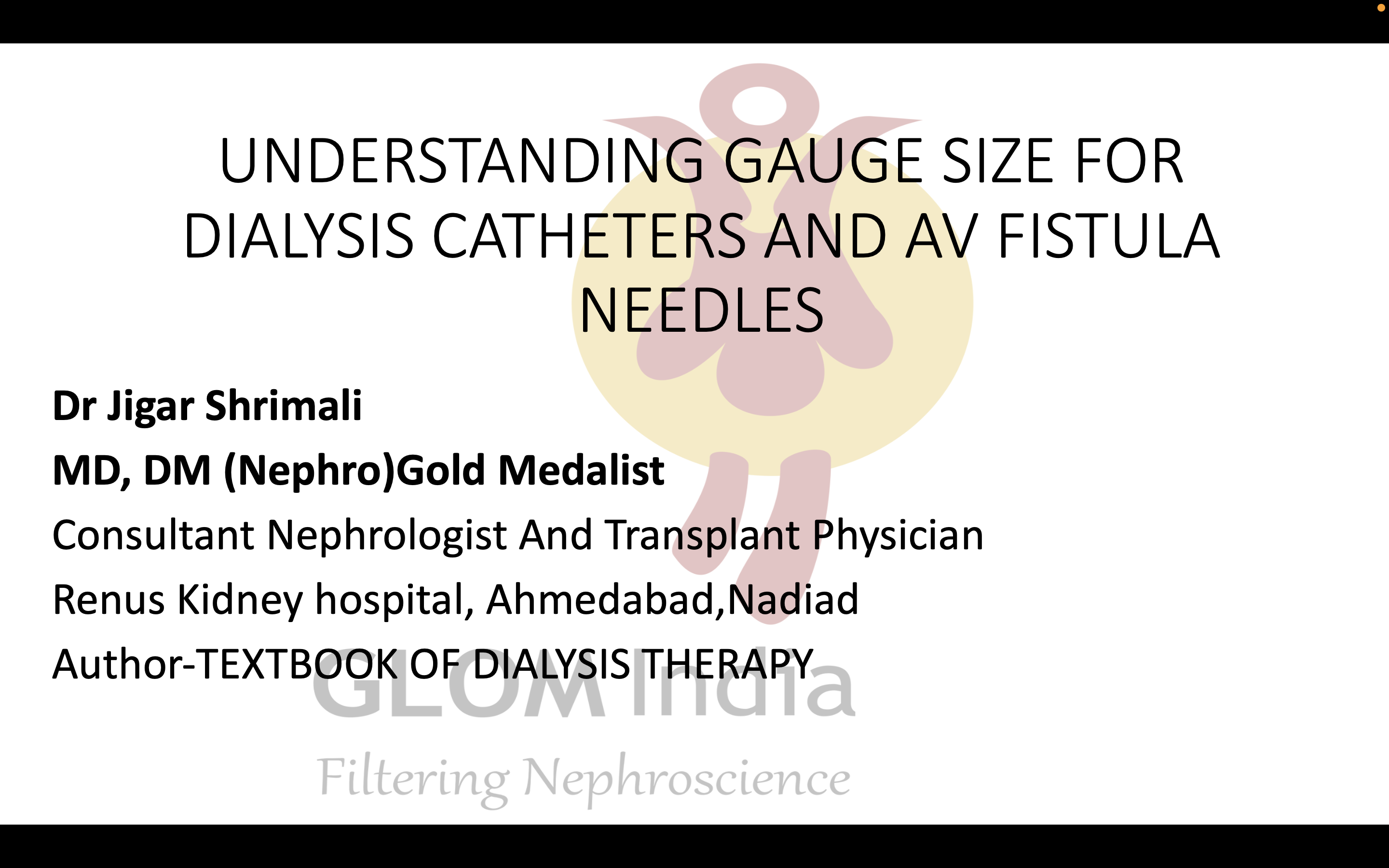During dialysis therapy, different size of dialysis catheters, dilators, introducers and AVF needles are utilised. We need to understand gauge system.
OVERVIEW
The French catheter scale (most correctly abbreviated as Fr, but also often abbreviated as FR or F) is commonly used to measure the outer circumference of cylindrical medical instruments including catheters. The French Gauge was devised by Joseph-Frédéric-Benoît Charrière, a 19th century Parisian maker of surgical instruments, who defined the “diameter times 3” relationship.
French Gauge is the diameter in millimetres of the catheter multiplied by 3, thus an increasing French size corresponds with a larger diameter catheter.
Fr = Diameter in millimetres*3
For example, if the diameter is 4 mm the French size is 12.
This is contrary to needle-gauge size, where the gauge is 1/ diameter inches; thus the larger the gauge needle, the more narrow the bore of the needle.
The Stubs Iron Wire Gauge system is also commonly used in a medical setting and is in fact more common for measuring needles, even though many find the Stubs system to be more confusing because the scale is non-linear and inversely proportional.
GAUGE SIZE SYSTEMS
A)French Gauge
1 Fr is equivalent to 0.33 mm = .013″ = 1/77″ of diameter. Thus the size in French units is roughly equal to the circumference of the dialysis catheter in millimetres.
Sizing scale of the French catheter system
|
French Gauge |
Diameter (mm) | Diameter (inches) |
| 3 | 1.00 | 0.039 |
| 4 | 1.33 | 0.053 |
| 5 | 1.67 | 0.066 |
| 6 | 2.00 | 0.079 |
| 7 | 2.33 | 0.092 |
| 8 | 2.67 | 0.105 |
| 9 | 3.00 | 0.118 |
| 10 | 3.33 | 0.131 |
| 11 | 3.67 | 0.144 |
| 12 | 4.00 | 0.158 |
| 13 | 4.33 | 0.170 |
| 14 | 4.67 | 0.184 |
| 15 | 5.00 | 0.197 |
| 16 | 5.33 | 0.210 |
| 17 | 5.67 | 0.223 |
| 18 | 6.00 | 0.236 |
| 19 | 6.33 | 0.249 |
| 20 | 6.67 | 0.263 |
B) Stubs Iron Wire Gauge
AVF needles are available in a wide variety of outer diameters described by gauge numbers. Smaller gauge numbers indicate larger outer diameters. Inner diameter depends on both gauge and wall thickness.
The needle gauge system, often called just the Gauge or G, is an internationally-used scale for sizing needles. It was adopted from pre-existing gauges which were used in industry to size metal wire. The gauge originally arose as a method for measuring the thickness of metal wire, in particular, iron wire. For centuries, wire was manufactured by a process known as ‘drawing’. The process of wire-making started with a thick wire, and thinner wires were made by pulling (or drawing) the wire through progressively smaller holes.
In contradistinction to the French scale, which is a metric system, the Gauge size cannot be derived from a straightforward formula.
Although there is not an equal increment between each step in the system, the calibre decreases by ≈11% per increment.ow rate (BFR)
| AVF Needle Gauge | Outer Diameter |
| 18 gauge | 1.27 mm |
| 17 gauge | 1.47 mm |
| 16 gauge | 1.65 mm |
| 15 gauge | 1.82 mm |
| 14 gauge | 2.10 mm |
With this It is important to match needle gauge to blood flow rate. These are minimum recommended gauges for the stated BFR settings. Larger needles, when feasible, will reduce pre-pump arterial pressure and increase delivered blood flow.
| Blood flow rate (BFR) | Recommended needle gauge |
| <300 mlin | 17 gauge |
| 300–350 ml/min | 16 gauge |
| >350–450 ml/min | 15 gauge |
| >450 ml/min | 14 gauge |
Reference: The End-Stage Renal Disease National Co- ordinating Centre (ESRD NCC) Fistula First Catheter Last (FFCL) Workgroup Coalition. Fistula First Initiative: cannulation of new fistula policy and procedure. Available at: http://!istula!irst.org/2014. Accessed December 2, 2015.
Dr. Jigar Shrimali
About him:
Dr. Jigar Shrimali has completed his DM (Nephrology – Gold Medalist) from I.K.D.R.C. – ITS, BJ Medical College, Ahmedabad, Gujarat. He is currently working as a consultant Nephrologist and Transplant Physician in Renus kidney hospital, Ahmedabad, Nadiad, Gujarat. He is also keen on academic programs for which he has conducted several workshops for resident doctors, physicians and dialysis technicians covering 40+ topics on Dialysis Therapies alone. He is author of TEXTBOOK OF DIALYSIS THERAPY.





